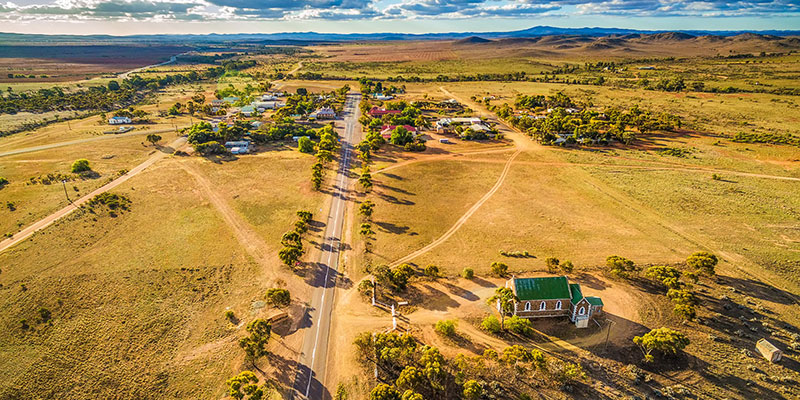Hundreds of thousands of Australians in remote areas have access only to drinking water that is unsafe or that fails to meet aesthetic standards.
Modular water treatment can help bring safe drinking water to remote, underserved communities
The quality of drinking water in Australia is generally high, with 93% of households having access to clean, safe drinking water. Yet, while this is true for urban households, almost 200,000 people living in remote parts of the country do not have the same luxury.
A study published earlier this year in Nature Partner Journal | Clean Water found that about 400 rural communities, 40% of which are remote, Indigenous communities, don’t have access to safe drinking water. Residents often must drink water containing high levels of harmful contaminants including arsenic, E. coli, nitrates, and uranium.
An additional 400,000 people have to drink water that doesn’t meet aesthetic standards for drinking water due to issues with color, taste, or smell. Residents complain of skin irritations, nausea, and kidney problems, and blame the water for their health woes.
According to the authors of the study, “Measuring the gaps in drinking water quality and policy across regional and remote Australia,” these communities are not included in national water quality reporting.
Dr Paul Wyrwoll, a research scientist at the Institute for Water Futures, Australian National University (ANU), was lead author of the study. He said:
Australia’s national water-quality statistics do not include service providers with less than 10,000 connections. This means approximately two million people, or about 8% of Australia’s population, are not included in reporting on the ‘clean water for all’ goal of the United Nations Sustainable Development Goals (SDGs).
Wyrwoll explained that the researchers started with a fairly simple question: “How many people in Australia lack access to safe, good quality water?” The answer to this question was hard to arrive at since researchers found that Australia lacks a national drinking water-quality reporting system that includes smaller water providers.
In order to address the issue and make safe drinking water available to all, the statistics need to more accurately represent the challenges faced by remote communities and the water providers servicing these areas. According to Wyrwoll, the creation of a national drinking water database would greatly benefit this cause.
Since many locations with compliance issues are smaller, rural communities, improving drinking water quality will require hyperlocal solutions. An open-access water quality database can support more customer-led approaches to defining the problems and then deciding on the sustainable solutions.
Safe Drinking Water for Remote Locations
Once vulnerable communities are identified, along with their water problems, efforts can be made to rectify the situation. While it may seem like a daunting task to provide safe drinking water in remote areas of the country, new modular water treatment technologies make this kind of decentralized water treatment completely feasible.
For example, Fluence’s NIROBOX™ modular water treatment plant is packaged in a standard 40-foot shipping container that can be shipped anywhere in Australia or the rest of the world. It offers a cost-effective water treatment solution that can be designed to treat any freshwater source or to desalinate brackish water and seawater.
The small footprint of NIROBOX™ and its low maintenance requirements and energy-efficient design make it the perfect solution for delivering high-quality safe drinking water to remote off-grid communities. The modular design also allows for scalability should a community’s water needs grow in future.
NIROBOX™ water treatment solutions are providing clean, safe drinking water to remote communities around the world. Contact Fluence to find out how we can help address your needs.

